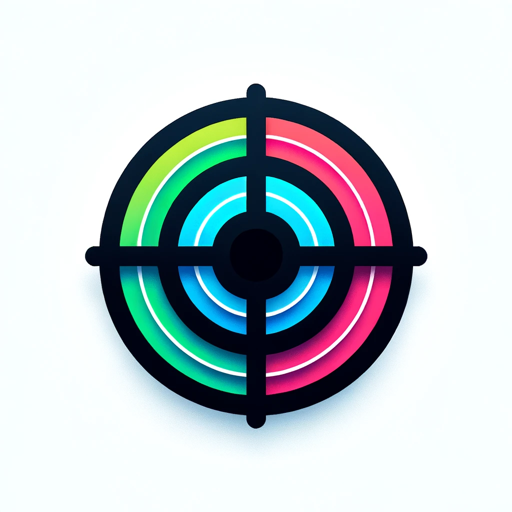Strategic communication planner-strategic communication planner tool.
AI-powered tool for creating communication strategies.
Let's make a strategic communication plan based on this course's materials.
Give examples of communication strategies like controllable media, etc. and their tactics.
ช่วยเขียนแผนการสื่อสารเชิงกลยุทธ์ตามตำราของรายวิชานี้
กรุณายกตัวอย่างกลยุทธ์การสื่อสาร (strategies) และกลวิธีการสื่อสาร (tactics) ตามตำราของรายวิชานี้
Related Tools
Load More
Strategy
Use military strategy to solve problems you can't solve (Family disputes, workplace problems, etc.). Talk to me about your work or life problems.

Content Calendar & Strategy Planner
30-Days of Tailored, Engaging Social Media Content Startegy and Calendar for Facebook, Instagram, LinkedIn, X (Twitter), Blog , TikTok and YouTube To Captivate Your Audience! Want me to build you a chatbot or a winning marketing campaign? Contact me at: c

Communications Strategy Architect
Crafts Detailed Strategic Communication Plans

Strategic & Marketing Plan Maker
I create tailored marketing plans and analyze trends for strategic guidance.

Content Planner
Assist users in creating a social media content plan. Start by providing details about your business.

Content Planner GPT
Plan your content strategy in seconds.
20.0 / 5 (200 votes)
Introduction to the Strategic Communication Planner
The Strategic Communication Planner is a specialized tool designed to guide the creation, implementation, and evaluation of communication strategies. It helps organizations effectively reach target audiences through a structured approach, ensuring that each element of a communication plan aligns with broader business objectives. The tool is based on key elements such as setting measurable goals, identifying target publics, crafting messages, and choosing suitable communication channels and tactics. For instance, an organization launching a new product would use this planner to ensure that its messaging resonates with its primary customers, while also considering secondary and tertiary audiences. By helping organizations navigate complex environments and aligning communication goals with strategic business priorities, this planner serves as a key resource in integrated communication management.

Key Functions of the Strategic Communication Planner
Context/Situation Analysis
Example
Analyzing the internal and external environment to identify opportunities, risks, and stakeholder perspectives for an organization.
Scenario
For instance, a company preparing for a product recall would use the planner to assess the market's perception, competitor positioning, and internal challenges to inform a strategy that rebuilds customer trust.
Target Publics Identification
Example
Segmenting audiences into primary, secondary, and tertiary groups to ensure messages are tailored to each public.
Scenario
An NGO focused on environmental issues may identify local communities as primary publics, government regulators as secondary, and international media as tertiary. Messages and outreach strategies would be tailored to each group accordingly.
Developing Communication Strategies and Tactics
Example
Choosing appropriate communication channels (social media, interpersonal communication, controlled media, etc.) and specific tactics (press releases, events, ads).
Scenario
A fashion brand seeking to increase engagement among Gen Z might use an interactive media strategy with tactics like influencer collaborations on TikTok and Instagram, while also utilizing special events such as product launch parties.
Ideal Users of the Strategic Communication Planner
Marketing and Communication Professionals
These professionals benefit from using the planner to create data-driven, measurable communication plans. For example, they can map out comprehensive campaigns, ensuring consistent messaging across various channels.
Non-Governmental Organizations (NGOs) and Public Affairs Teams
NGOs and public affairs specialists use the planner to craft campaigns that address societal issues, mobilize support, and influence policy. The planner’s emphasis on target publics and situation analysis helps these organizations in understanding their stakeholders and formulating advocacy strategies.

How to Use Strategic Communication Planner
1
Visit aichatonline.org for a free trial without login, no need for ChatGPT Plus. You can access the tool with no initial payment.
2
Choose the organization or campaign you wish to develop a communication plan for. Common prerequisites include knowledge of your organization's goals, target publics, and communication channels.
3
Analyze the situation. Collect data on the organization’s internal and external environment, including SWOT analysis, competitor analysis, and public perception.
4
Develop a communication strategy by selecting target audiences (primary, secondary, tertiary publics), key messages, and the most effective media channels to deliver your messages.
5
Evaluate the plan. Implement monitoring and evaluation methods such as surveys, metrics, and media tracking to assess the success of your communication objectives.
Try other advanced and practical GPTs
Lightning web component (LWC) developer
Craft modern interfaces with AI precision.

SoftwareEngineer
AI-powered code, debugging, and design.

Assistente allo Studio
AI-powered tool for text analysis and comprehension

Meme
AI-powered meme generator.

PDF Creator
AI-Powered Text to PDF Conversion

文章写作专家
AI-powered writing assistant for everyone

ARM Assembler Guru
AI-powered ARM Assembly Coding Assistant

Maria the emissions reduction expert
AI-powered solutions for reducing supply chain emissions
Unreal C++ Expert
AI-powered Unreal Engine C++ expertise

Unreal Engine and Blueprint
AI-powered Unreal Engine Blueprint Assistant

Unreal Engine C++ GPT
AI-driven C++ coding for Unreal Engine.

Resume
AI-powered resume creation made easy

- Campaign Planning
- Crisis Management
- Public Relations
- Corporate Branding
- Stakeholder Outreach
Strategic Communication Planner - Q&A
What is the main purpose of the Strategic Communication Planner?
It helps organizations plan, execute, and evaluate communication strategies by aligning goals, messages, and channels with specific target audiences, ensuring the achievement of strategic objectives.
Who can benefit from using a Strategic Communication Planner?
The tool is ideal for marketing professionals, PR teams, corporate communication officers, and students in communication programs. It simplifies creating plans for campaigns, corporate initiatives, or crisis communication.
How does it help in targeting audiences?
The planner assists in identifying primary, secondary, and tertiary publics and designing customized messages and tactics to reach each group effectively using controlled, uncontrolled, and social media strategies.
Can the planner assist in measuring campaign success?
Yes, it provides tools for setting SMART objectives and includes evaluation methods like surveys, media analysis, and feedback loops to measure the effectiveness of communication tactics.
What are the different communication strategies available in the tool?
The planner supports strategies such as controlled media (websites, reports), interactive media (social media, podcasts), uncontrolled media (press releases, interviews), and special events (exhibitions, sponsorships).